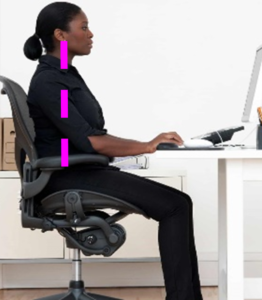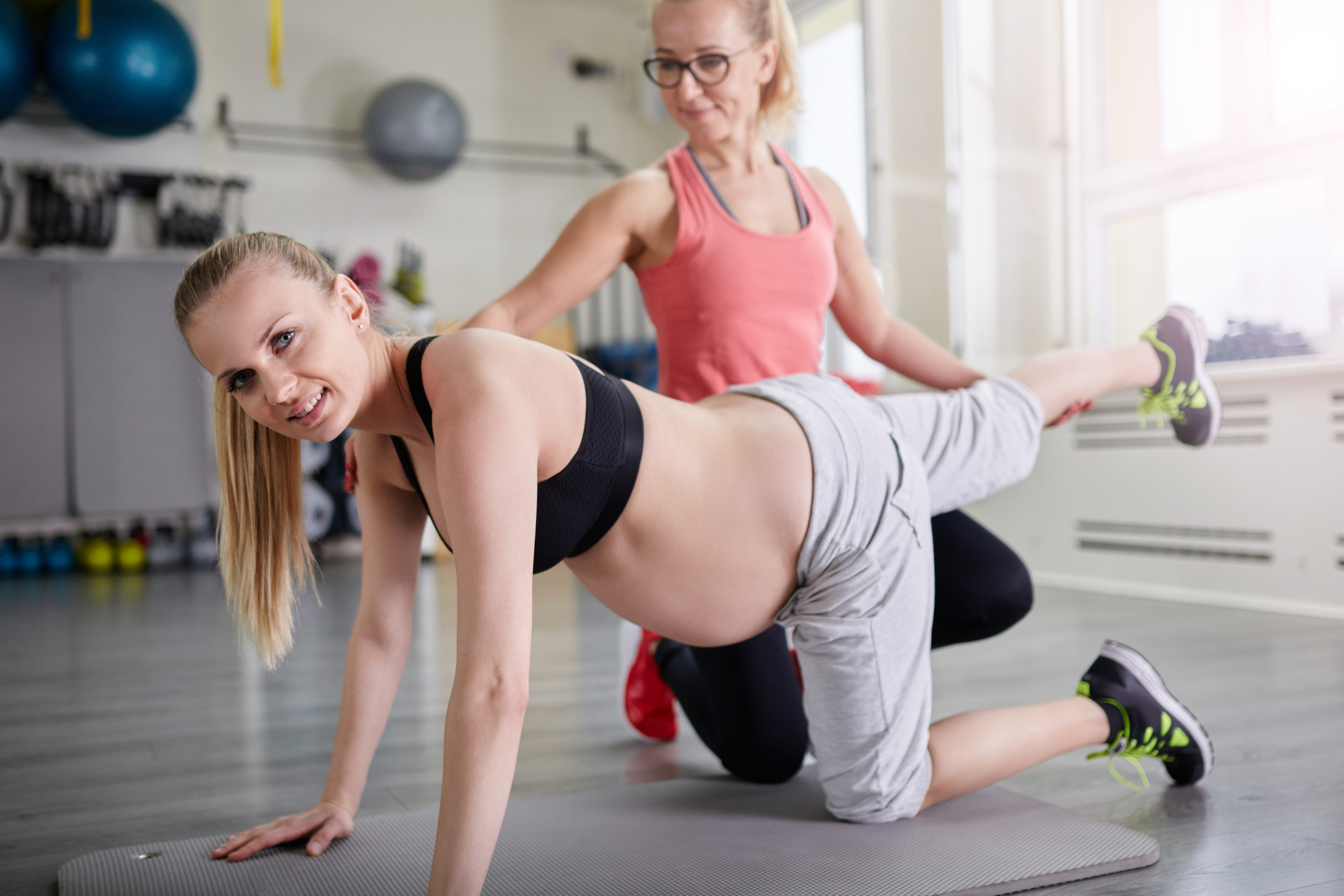The trainer in the photo above is missing it…
When working with prenatal or postpartum clients, perhaps you begin by considering which exercises you’ll include in their programs. However, how they move is even more important. This holds true for how they move during their workouts, and throughout the rest of their day, because good alignment leads to fewer pregnancy pains and a faster postpartum recovery.
Therefore, one of the most critical coaching tips when working with pregnant or postpartum clients is neutral alignment.
Neutral alignment is important for any individual, but it’s especially important for your pre and postnatal clients. Let’s discuss what it is, why it’s so important, and how to help your clients find (and move in) neutral alignment.
What is Neutral Alignment?
When the body is in neutral alignment, the skeleton is vertically stacked, as you see in the far-left image below. This top-down alignment is desirable because the skeletal structures hold the body upright. If the body is out of neutral alignment (as you see in the middle and right images below), it increases stress on the soft tissues, which forces the tissues to use more of their capacity just to manage the added stress placed upon them. This means they have less capacity to generate movement (or resist unwanted movement), which can result in movement compensations, pains, or injuries. Therefore, neutral alignment is much less costly energetically and much more efficient muscularly.

There are two criteria for being in neutral alignment:
- Vertical stacking: The first goal is to have vertical stacking of 5 landmarks: ears, shoulders, hips, knees, and ankles, as demonstrated by the yellow dotted line on the far-left photo above.
- Neutral pelvis: The other qualification is to ensure that the rib cage is stacked parallel on top of the pelvis, as noted by the horizontal lines in the far-left image. To find this, locate your ASIS (bony prominences in front of your pelvis) and imagine they are flashlights. Aim your lights straight ahead (as demonstrated in far-left photo). If the lights point to the ground, then you are in an anterior tilt (middle photo) and if they point to the sky then you are in a posterior tilt (right photo).
Common Pregnancy Alignment Shifts
As stated above, when the body is out of neutral alignment, it can lead to increased pains or injuries. Unfortunately, the physical changes of pregnancy tend to pull a person out of neutral. You can see this in the image below.

The common pregnancy alignment shifts are:
- Anterior Pelvic Tilt: As the belly grows, it often tips the pelvis anteriorly resulting in lumbar lordosis (or the excessive lower back arch). This is one of the reasons that low back pain is the #1 most common pain during pregnancy.
- Rounded Shoulders: A consequence of the lumbar lordosis is that the other curves in the spine will accommodate, often leading to a more pronounced kyphosis of the thoracic spine. This can be exaggerated by the weight of the growing breasts.
- Shift in Center of Gravity (COG): A non-pregnant person’s COG is just below the navel. During pregnancy, the growing belly shifts the COG out and up. Some people may lean backwards to counterbalance the weight in front (as you can see in the photo). This places even greater pressure on the lower back.
- Wider Pelvis: The pelvis widens a bit to accommodate the growing baby and provide mobility for birth. A wider pelvis increases foot width, which means that gait and movement patterns will likely be altered, which can result in movement compensations.
It’s important to note that the movement compensations – and resulting pains and injuries – discussed above do NOT have to be an inevitable part of pregnancy. Therefore, coaching your client into neutral alignment will be a critical component of your prenatal training. It is also very important in postpartum training to minimize stress on a body that is trying to heal.
How to Coach Your Clients into Neutral Alignment
If you are working with clients 1-on-1, begin by helping your client find neutral alignment in a standing position (ensuring vertical stacking and neutral pelvis). Perhaps start by asking clients to stand in what they think is neutral, and then help them make any necessary adjustments. This allows them to feel the adjustments they need to make.
Even in a group setting when you cannot teach neutral alignment, it’s important to correct common alignment errors like you see below. This goes for any client, but especially a pregnant one, where you can see the growing belly adds even greater stress to the low back and abdominal wall.

It’s also important to correct the opposite alignment issue: spinal flexion (rounding), especially during hinge patterns (first photo below) or when sitting on the bike for a cycling class (second photo). When hinging, encourage clients to initiate the movement by reaching their tailbone toward the back wall and keeping ear-shoulder-hip alignment. For cycling, encourage clients to raise their handlebars as pregnancy progresses to remain in neutral.


If you are working with clients 1-on-1, help them think about moving in neutral alignment outside their workouts as well. The most important daily movement habits to help your pre and postnatal clients adjust are sitting and bending over due to the amount of time most people spend performing these activities each day (and the tendency to perform them out of neutral).
Have your clients think of ear-shoulder-hip alignment, as you see in the images below. Just correcting these two things can make a BIG difference.


Interested in Learning More?
While neutral alignment is the first concept we teach pre & postnatal clients, there is a lot that comes after that. To learn how to develop effective prenatal and postpartum training programs for clients of all stages and fitness levels, explore our education to become a ProNatal Certified.
Or, if you’re a group fitness instructor, learn simple (but powerful) tips to better coach the pre & postnatal participants who attend your classes — many of which benefit your entire class — in our mini course: Pre/Postnatal Education for Group Fitness Instructors.
